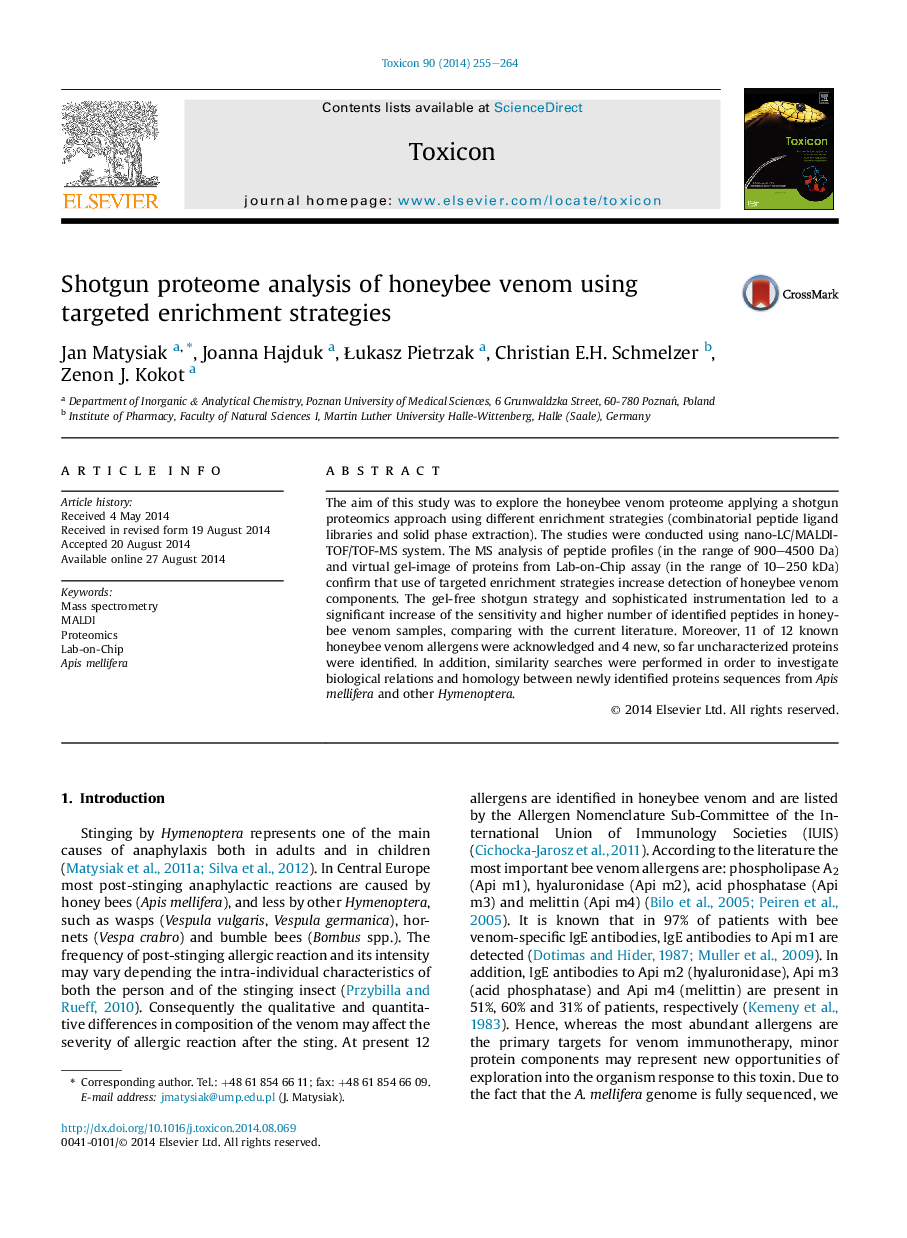| Article ID | Journal | Published Year | Pages | File Type |
|---|---|---|---|---|
| 8396197 | Toxicon | 2014 | 10 Pages |
Abstract
The aim of this study was to explore the honeybee venom proteome applying a shotgun proteomics approach using different enrichment strategies (combinatorial peptide ligand libraries and solid phase extraction). The studies were conducted using nano-LC/MALDI-TOF/TOF-MS system. The MS analysis of peptide profiles (in the range of 900-4500Â Da) and virtual gel-image of proteins from Lab-on-Chip assay (in the range of 10-250Â kDa) confirm that use of targeted enrichment strategies increase detection of honeybee venom components. The gel-free shotgun strategy and sophisticated instrumentation led to a significant increase of the sensitivity and higher number of identified peptides in honeybee venom samples, comparing with the current literature. Moreover, 11 of 12 known honeybee venom allergens were acknowledged and 4 new, so far uncharacterized proteins were identified. In addition, similarity searches were performed in order to investigate biological relations and homology between newly identified proteins sequences from Apis mellifera and other Hymenoptera.
Related Topics
Life Sciences
Biochemistry, Genetics and Molecular Biology
Biochemistry, Genetics and Molecular Biology (General)
Authors
Jan Matysiak, Joanna Hajduk, Åukasz Pietrzak, Christian E.H. Schmelzer, Zenon J. Kokot,
